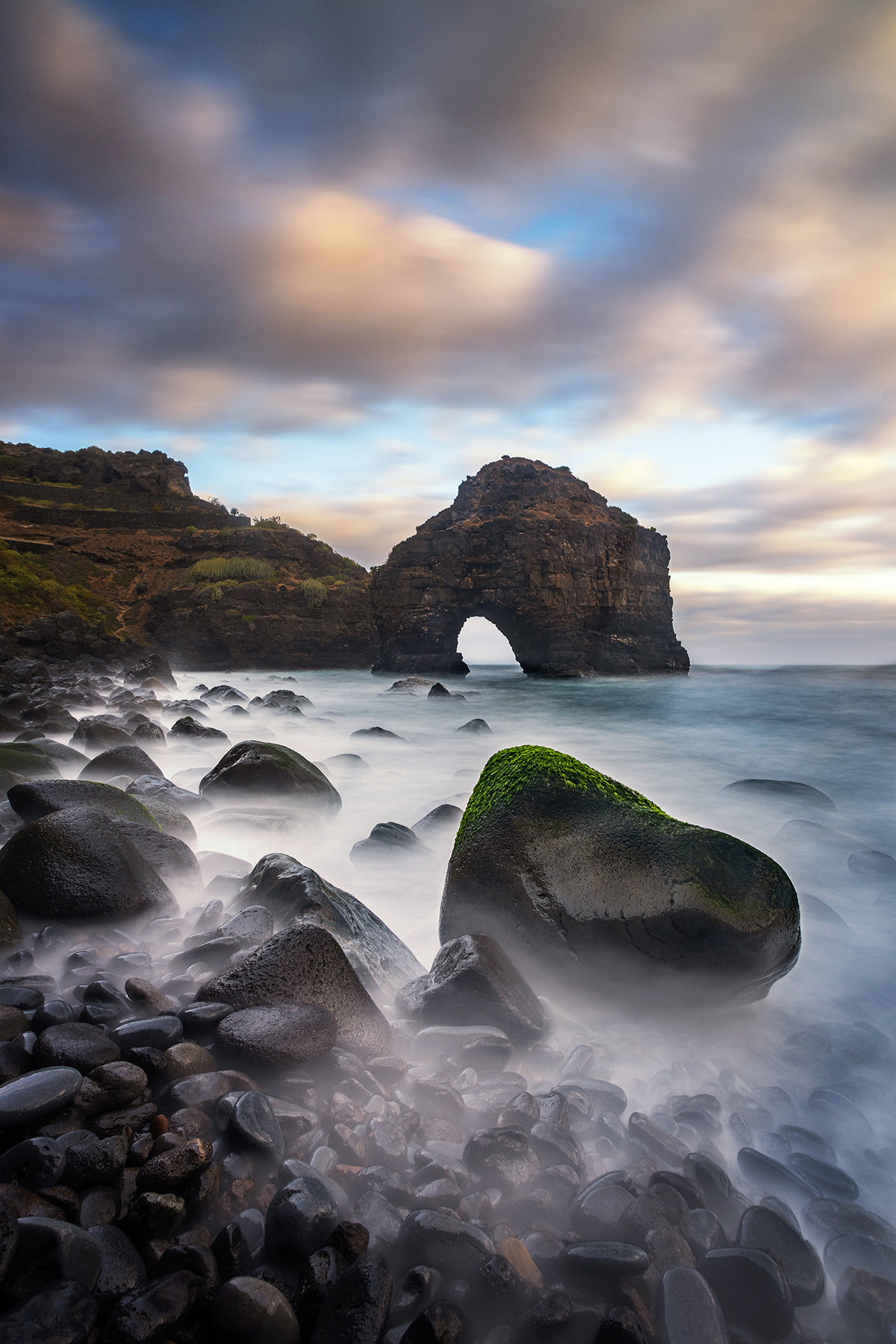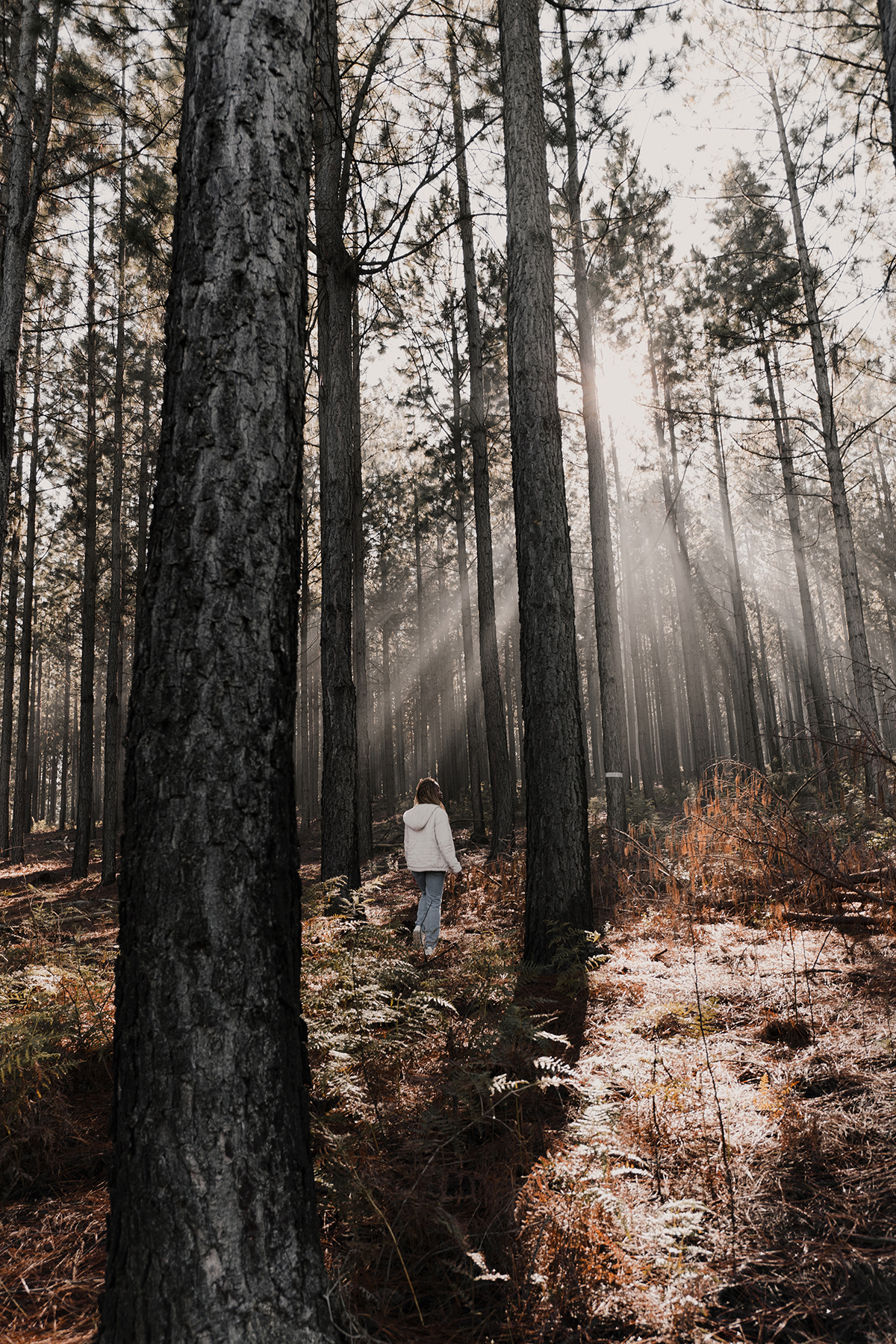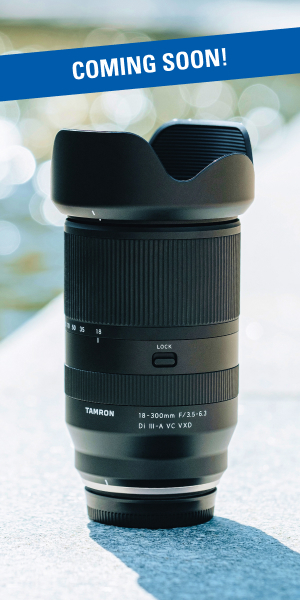Leading lines in photography are a powerful compositional technique that can turn an ordinary snapshot into a compelling visual story. By guiding the viewer’s eye toward a focal point, these lines help lead them through the image, creating a sense of depth, movement, and perspective. Strong composition is essential in photography, and leading lines have long been a trusted tool for photographers to enhance visual impact.
Whether you’re an experienced photographer or just starting out, knowing how to use lines can make your photos stand out. This article discusses leading lines in nature photography. It also explains how to create captivating beginnings for your photo stories.
What You’ll Learn in This Article:
- What leading lines in photography are and why they enhance visual storytelling
- The different types of leading lines—straight, curved, diagonal, and converging
- How to identify and use leading lines in both natural and urban environments
- Tips for composing stronger photos using perspective, framing, and subject placement
- Recommended lenses and settings to effectively capture leading lines in your shots
Enhance Your Photos with Line-Based Composition
Leading lines in a photograph guide the viewer’s eyes from the front to the back or towards a focal point in the image. They can make a flat image feel more immersive by adding perspective and depth. They can be found in both man-made and natural environments, such as roads, fences, rivers, and tree branches. Bold lines in a photo can create the illusion of movement. This can give the picture a sense of energy and liveliness. The lines can make it appear as though objects are in motion or moving in a specific direction. This technique adds dynamism to the image.
Quick Recap: Leading Lines in Photography
- Leading lines guide the viewer’s eye toward a focal point in your photo.
- They add depth and dimension, making flat images feel more immersive.
- You can find them in both natural and man-made settings—like rivers, roads, and railings.
- Strong or bold lines can imply motion and add dynamic energy to the composition.
- Using leading lines effectively enhances visual impact and storytelling.
The Psychology Behind Leading Lines
We naturally focus our eyes on lines and patterns. Leading lines are a simple and effective way to direct the viewer’s gaze in an image. By placing these lines in certain spots in your picture, you can subtly direct your viewer’s focus to the important parts. This technique is excellent for storytelling and conveying emotions as it leads the viewer through the visual narrative. Nature Leading Lines Photography In nature photography, leading lines are found in the natural patterns and shapes of the surroundings. They add a layer of depth and intrigue to landscapes, seascapes, and even close-up shots of natural elements.
Common Line Styles That Shape Strong Compositions

When using leading lines in photography, it’s important to understand the different line types and how they influence a composition. Each type of line has its own visual impact and can be used to evoke specific feelings or guide the viewer in unique ways. Whether you’re capturing sweeping landscapes, urban architecture, or intimate portraits, the strategic use of leading lines—such as straight, curved, diagonal, or converging—can significantly enhance depth, movement, and focus in your image. Recognizing these line types will help you create more intentional and powerful compositions that draw the viewer’s eye and elevate your storytelling.
There are various types of leading lines that you can utilize in your compositions:
- Straight Lines: Convey a sense of order and direct the viewer’s gaze in a straightforward manner.
- Curved Lines: Add a sense of movement and can lead the eye on a journey through the frame.
- Diagonal Lines: Imply action and dynamism, as they create a sense of depth and three-dimensionality.
- Converging Lines: Happen when two or more lines meet at a point far away, making things look more 3D.
Examples of Leading Lines

Understanding how to identify and apply leading lines in photography is key to mastering composition. These visual pathways can be found in everyday scenes—from winding trails and riverbanks in nature to architectural elements like staircases, bridges, and city streets. Real-world examples help illustrate how leading lines work to direct attention, create perspective, and bring a sense of motion or stillness to your images. By studying how these lines function across different environments, you’ll gain practical insight into using them effectively in your own photography.
- Railroad tracks receding into the distance
- A winding path leading through a forest
- Rows of buildings or trees converging towards a vanishing point
- A staircase or escalator leading upwards or downwards
- Shorelines or rivers leading towards the horizon
- Bridges, fences, or roads leading towards a distant landmark
Finding Leading Lines in Nature

Finding leading lines in photography, especially in natural settings, starts with careful observation of your environment. Whether you’re shooting landscapes, seascapes, or forest scenes, look for natural or man-made elements that draw the viewer’s eye toward a subject or vanishing point. Paths, rivers, shorelines, waves, tree branches, and even shadows can all act as powerful leading lines. These lines not only enhance depth and perspective but also guide the visual narrative of your image. By recognizing how these elements interact within the frame, you can compose more engaging and intentional nature photographs.
Consider the following tips when composing your shots:
- Survey the scene: Take a moment to look around you. Find any important features or objects. Look for things like roads, paths, fences, railings, bridges, tree branches, or any other linear elements that draw the eye.
- Consider perspective: Pay attention to the angles and perspectives from which you can capture your scene. Sometimes, a slight change in your vantage point can reveal leading lines that weren’t initially apparent. Move around the scene and explore different viewpoints to find the most compelling composition.
- Look for convergence: Leading lines often converge towards a vanishing point in the distance. Scan the scene for any lines or objects that appear to converge or converge towards a common point on the horizon. This convergence adds depth and dimension to your composition.
- Subject Placement: Position your main subject at the end of the leading lines or where lines intersect to create a strong focal point.
- Observe patterns and shapes: Leading lines don’t always have to be straight. Look for patterns, curves, or geometric shapes that can act as implied lines within your frame. These can include repeating elements like arches, rows of objects, or waves in water.
- Experiment with framing: Once you’ve identified potential leading lines, experiment with different framing and compositions to incorporate them effectively into your image. Consider how the lines in the scene interact with other elements. They help direct the viewer’s gaze towards the main subject or focal point.
- Adjust your camera settings when taking a picture: This includes changing the aperture, shutter speed, and ISO. Doing so will help you achieve the desired brightness and focus in your photos. To maximize depth of field and keep the entire scene in focus, try using a smaller aperture (higher f-stop number).
Techniques for the Use of Leading Lines

To maximize the impact of leading lines in photography, it’s essential to go beyond simply spotting them in your environment. The way you incorporate these lines into your composition can dramatically affect how your image is perceived. By using creative techniques such as contrast, color, texture, and layering, you can emphasize your leading lines and make them more effective at guiding the viewer’s eye. These enhancements not only add visual interest but also help strengthen the overall storytelling and compositional depth of your photo.
- Contrast and Color: Use contrast or color to make the starting point of your leading lines stand out.
- Texture and Pattern: Incorporate texture or repeating patterns to add visual interest and depth right from the beginning.
- Layering: Place elements along the leading lines to create layers and complexity in the image.
Real-World Photos That Use Lines to Lead the Eye

To fully grasp how leading lines in photography enhance composition, it helps to see them at work in real-world scenarios. Whether you’re shooting in natural environments or urban landscapes, leading lines can take many forms—each guiding the viewer’s eye and adding a sense of direction, depth, or drama to the image. Below are several impactful examples that demonstrate how photographers use different types of lines to create visual flow and highlight the subject within the frame.
Examples of Leading Lines in Action:
-
Railroad Tracks Receding into the Distance
Create strong, straight lines that naturally guide the viewer’s eye toward the horizon or a central focal point. -
A Winding Path Through a Forest
Use curved lines to lead the viewer on a visual journey, adding movement and mystery to your composition. -
Rows of Buildings or Trees Converging at a Vanishing Point
Emphasize perspective and depth with converging lines that pull the viewer into the scene. -
A Staircase or Escalator Leading Upward or Downward
Vertical or diagonal lines add dynamic direction, drawing the eye toward a higher or lower point of interest. -
Shorelines or Rivers Leading to the Horizon
These natural lines help establish a sense of flow while guiding attention to a distant subject or light source. -
Bridges, Fences, or Roads Pointing to a Landmark
Man-made elements can serve as strong linear guides, directing the viewer toward a key compositional element or focal area.
Best Practices for Using Leading Lines

To make the most of leading lines in photography, it’s essential to apply them with intention and compositional awareness. While these visual guides can dramatically enhance your images, their effectiveness depends on how thoughtfully they’re used. Leading lines should work in harmony with your subject and scene—never distracting or overwhelming the viewer. By understanding key principles such as balance, clarity, and subtlety, you can create images that not only direct the eye but also tell a more compelling visual story.
Best Practices to Effectively Use Leading Lines
- Balance and Composition: Ensure that your leading lines enhance the composition rather than overpower it. Balance is key—leading lines should complement the main subject and other elements in the frame.
- Clarity and Direction: Make sure the lines are clear and the direction they guide the eye is intentional. Ambiguous lines can confuse the viewer and dilute the impact of your image.
- Subtlety and Nuance: Sometimes, the most powerful leading lines are the ones that are not immediately obvious. Use subtlety to create a nuanced and sophisticated composition that reveals itself over time.
Recommended Lenses to Maximize Perspective and Depth

Choosing the right lens is essential when composing images with leading lines in photography, as it directly influences perspective, depth, and the overall visual impact. Wide-angle lenses are especially popular for capturing leading lines because they exaggerate perspective, making lines appear longer and more dramatic. This helps draw the viewer’s eye deeper into the scene and enhances the sense of depth.
A prime example is the Tamron 24mm F/2.8 Di III OSD (Model F051), a compact wide-angle prime lens that offers crisp detail and excellent depth of field control. For added versatility, the Tamron 20-40mm F/2.8 Di III VXD (Model A062) wide-angle zoom lens gives photographers more compositional flexibility while maintaining a bright aperture for low-light and creative control. Both options allow you to fully showcase the power of leading lines in landscapes, cityscapes, and architectural photography—resulting in more dynamic and immersive compositions.
How to Choose a Lens for Leading Lines:
- Prioritize wide-angle options to enhance depth and make lines appear more dramatic.
- Look for fast apertures (f/2.8 or wider) for better control over depth of field and low-light flexibility.
- Consider your subject and environment—urban scenes may benefit from zoom flexibility, while landscapes often work well with primes.
- Evaluate lens sharpness and distortion control, especially near the edges where leading lines often begin.
- Match your artistic style—whether you want bold, exaggerated lines or subtle, immersive depth, choose a lens that supports your vision.
Conclusion Let Leading Lines Guide Your Photography to the Next Level
Mastering the use of leading lines in photography is one of the most effective ways to elevate your compositions and tell more powerful visual stories. Whether you’re capturing vast landscapes, urban environments, or intimate details in nature, leading lines help create depth, direct attention, and add a dynamic flow to your images.
By recognizing natural and man-made lines, experimenting with perspective, and applying best practices in lens choice and composition, you can transform ordinary scenes into visually compelling photographs. So grab your camera, explore your surroundings, and let the lines lead the way to your next great shot.
Learn about these lenses and more at an authorized Tamron dealer in your area or visit the TAMRON Store today.
More Photo Tips | Watch Videos | Learn More About Tamron Lenses | Photo Gallery


